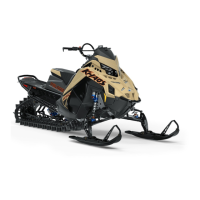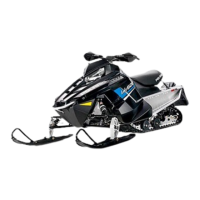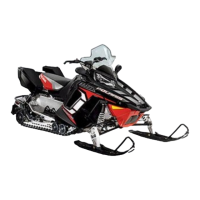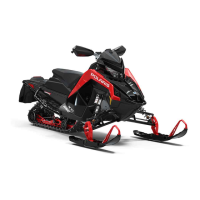9.17
REAR SUSPENSION
9
ski pressure while the upper hole (B) decreases ski pressure.
NOTE: By design, the BIASED COUPLE design of
the M-10 suspension displaces the rear arm as the
front arm is compressed. This means that when you
raise the front limiter strap, at some point you will
collapse the rear suspension arm, which will affect
SAG height and reduce rear suspension travel.
RAIL SLIDER
Rail Slide Wear Limit
Hi-Fax replacement on all Polaris models is similar. When any
area of the Hi-Fax is worn to the wear indicator (A), it should be
replaced. This will save wear on other vital components on the
suspension.
The slide rail is designed to operate in conditions with adequate
snow cover to provide sufficient lubrication. Excessive wear
may be due to improper alignment, improper track adjustment
or machine operation on surfaces without snow.
Rail Slide Removal
1. Remove the rear suspension.
NOTE: Some models may allow the rail sliders to be
removed by sliding it through track windows with
the suspension mounted in the machine.
2. Remove front rail slider retaining bolt, located at the rail tip.
3. Use a block of wood or a drift punch and hammer to drive
the Hi-Fax rearward off the slide rail.
4. With the rail slider at room temperature, install a new rail
slider by reversing steps 1 - 3.
NOTE: Lightly coat rail slider track clip area with a
lubricant such as LPS2 or WD-40 to ease installation.
Rail Slider Break In
After installing new rail sliders they must be “broke in” for
longer life and better wear patterns. When performing the
breaking in procedure ride the sled on a surface that has
adequate snow conditions with deeper snow nearby. Run the
sled on the adequate snow surface and dip into the deeper snow
every so often.
A
B
A

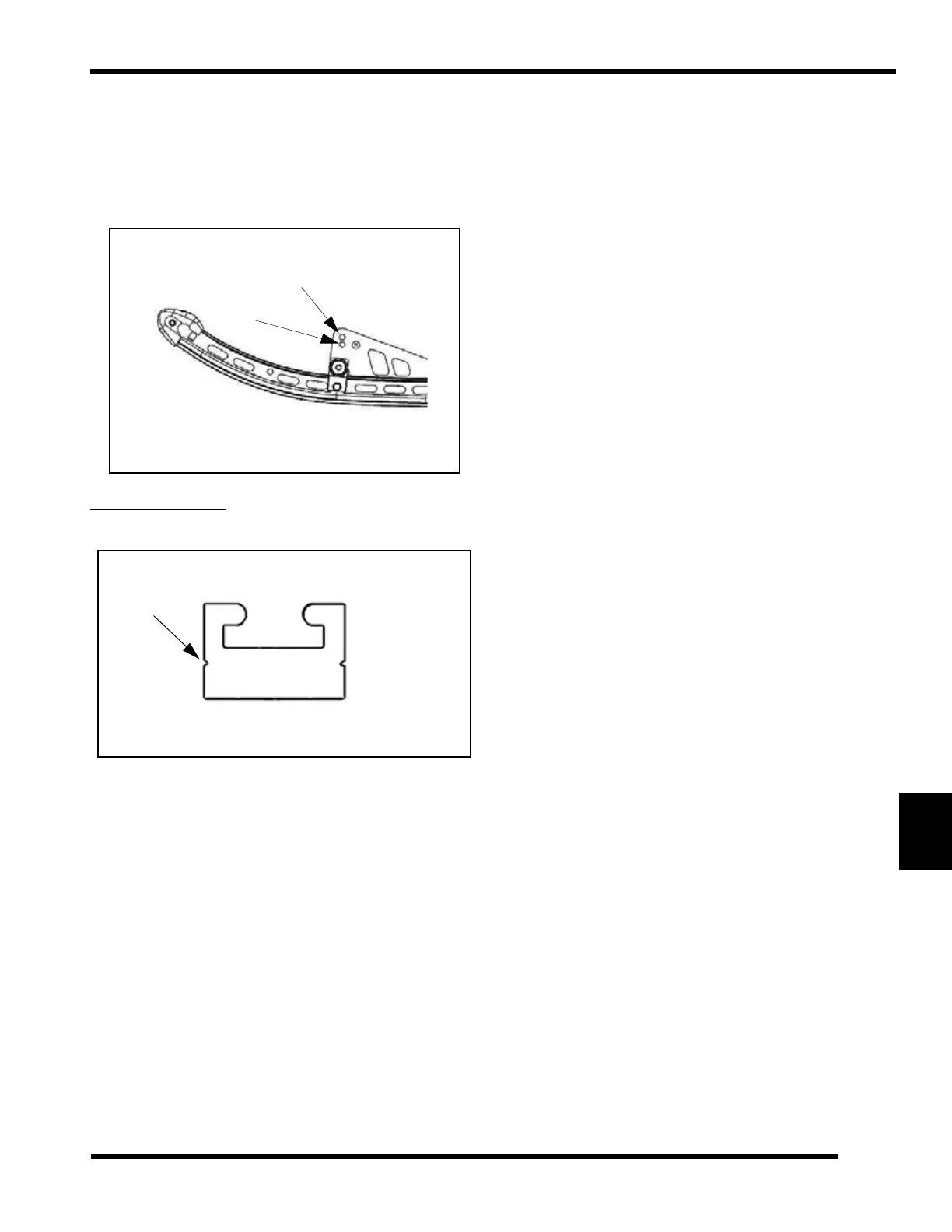